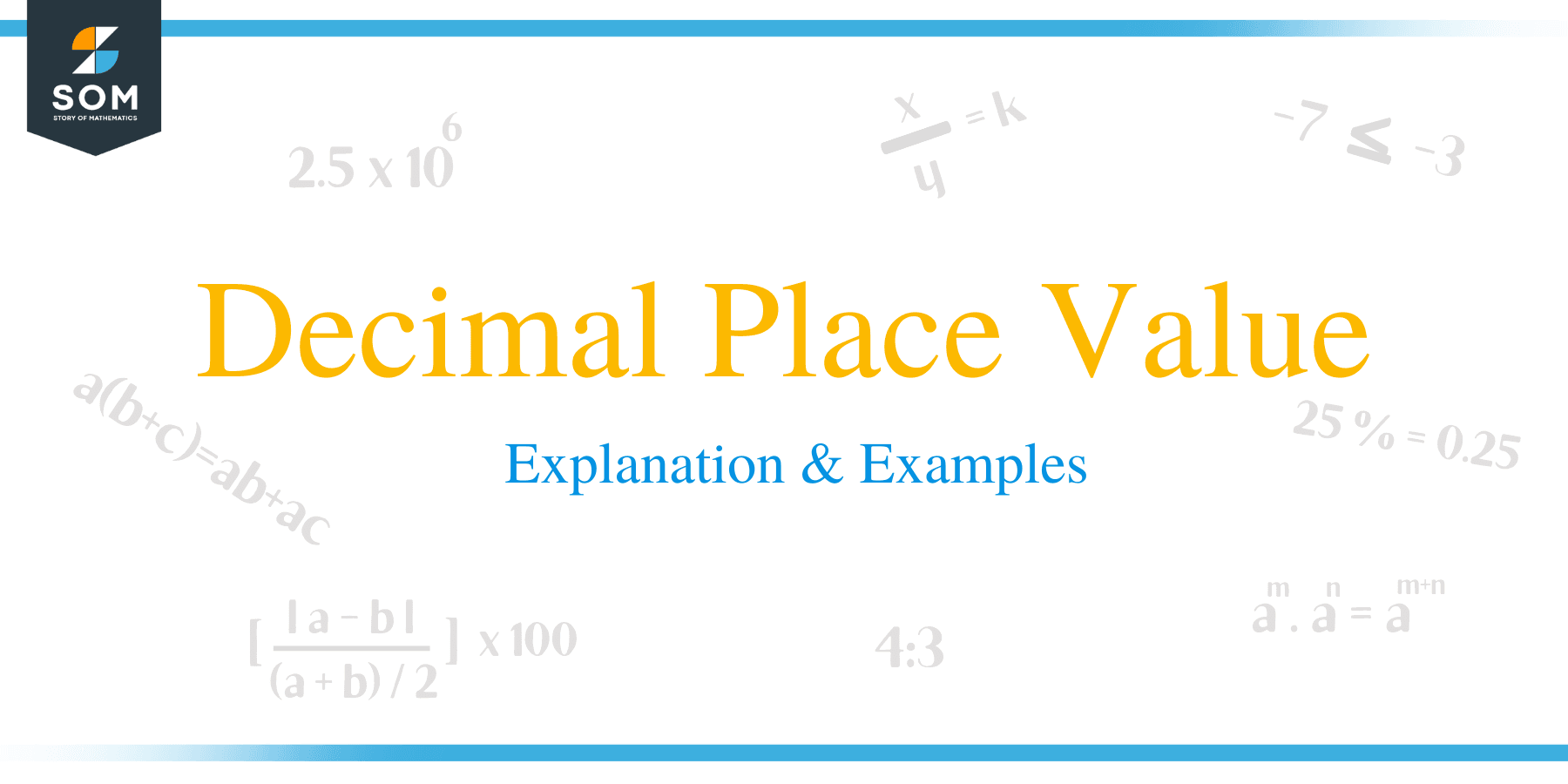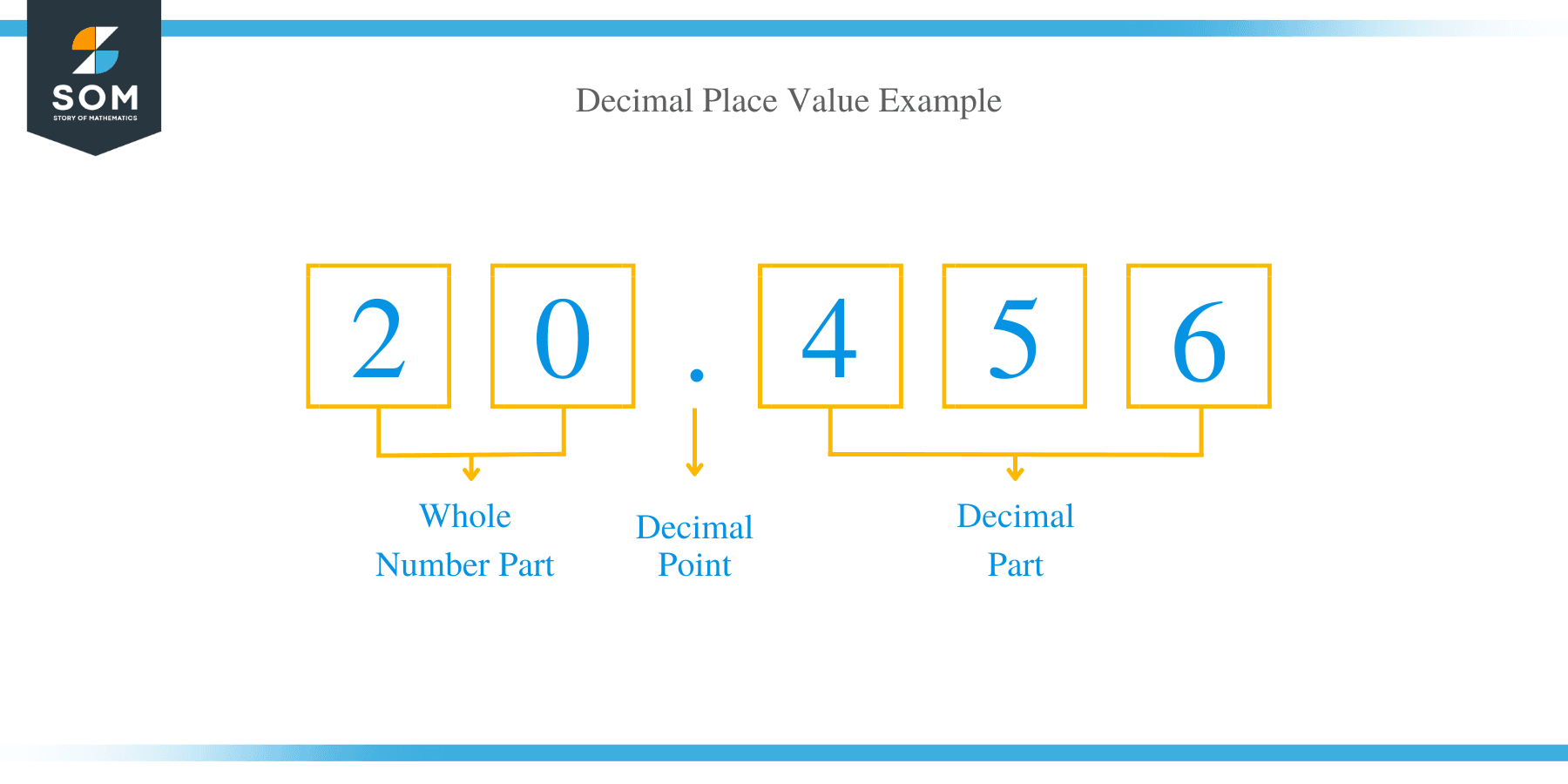- Home
- >
- Decimal Place Value – Explanation & Examples
Decimal Place Value – Explanation & Examples
 A decimal number is defined as a number which is written in the decimal notation where each digit represents the different powers of 10. For instance, 20.456, 5. 006, 0.0001 are examples of decimal numbers. A decimal number consists of the following parts:
A decimal number is defined as a number which is written in the decimal notation where each digit represents the different powers of 10. For instance, 20.456, 5. 006, 0.0001 are examples of decimal numbers. A decimal number consists of the following parts:
- The whole number parts
For example, 5 is the whole number in 5.006
- The decimal part
For example, 456 is the decimal part in 20.456
The whole and decimal part are separated by a dot (.) known as decimal point. The decimal point separates the whole number part on the left side and decimal part or fractional part on the right part.
The places on the left side or whole number part begin with ones, followed by tens, then hundreds, followed by thousands and so forth.
The places on the right or fractional part begin with tenths, followed by hundredths, then thousandths and so forth.
How to Read Decimals?
There are two standard ways of reading and writing decimal numbers. The first method entails reading off the digits of a decimal number. For instance, a decimal number such as: 0.005 is read as “zero point zero, zero, five” and 4.2 is read as “four, point two.”
Example 1
- 578 is written and read as twenty-five, point five seven eight.
- 14 is written and read as seven thousand, point one four.
- 002 is written and read as zero point zero, zero two.
The second method of writing and reading decimal numbers is to read the decimal part number as if they were a single integer, accompanied by the rightmost place value you use.
For example, 42.37 is read as “forty-two and thirty-seven hundredths.” And the number 8.34 is read as “eight and thirty-four hundredths.” In this case the word ‘point’ is replaced by the word ‘and’ the numbers on the right most are read with their place values.
Example 2
- 578 is written and read as twenty-five and five hundred seventy-eight thousandths.
- 14 is written and read as seven thousand and fourteen hundredths.
- 002 is written and read as two thousandths.
What is the Place Value of Decimals?
Place value is a positional notation system where the position of an integer in a number and with respect to a point, determines the value of it. The place value for decimal numbers is done exactly the same way whole numbers are treated, but in this case, it is reverse.
Place value chart
| HUNDREDS | TENS | ONES | DECIMAL POINT | TENTHS | HUNDREDTHS | THOUSANDTHS |
| x 10 2 | x 10 1 | x 10 0 | (.) | x 10 -1 | x 10 -2 | x 10 -3 |
On the place value chart, the numbers on left of the decimal point are multiplied with increasing positive powers of 10, whereas the digits on the right of the decimal point are multiplied with increasing negative powers of 10 from left to right.
In a whole number like 345, the number 3 is in the place of hundreds and therefore, 3 has a place value of 3 x 100 = 300. In decimal number 150. 536, the number three is in the place of hundredths, and therefore the place value of 3 is 0.03 or 3 x 10 -2.
The place value in decimals is based on preceding exponential of 10. When shifting from the left to the right of a decimal number, the integers get divided by powers of 10 (10 -1= 1/10, 10 -2 =1/100, 10 -3= 1/1000, etc.), implying that, the decimal place value defines the tenths, hundredths and so on. A hundredth in a decimal number implies 1/100 or 0.01.
Example 3
Determine the place of the decimal digits in the following number: 0.37.
Solution
The number 3 is in the place of tenths, and so the place value is 3 x 10 -1 = 3/10 = 0.3
7 is in the position of hundredths, and hence its place value is 7 x 10 -2 = 7/100 = 0.07
